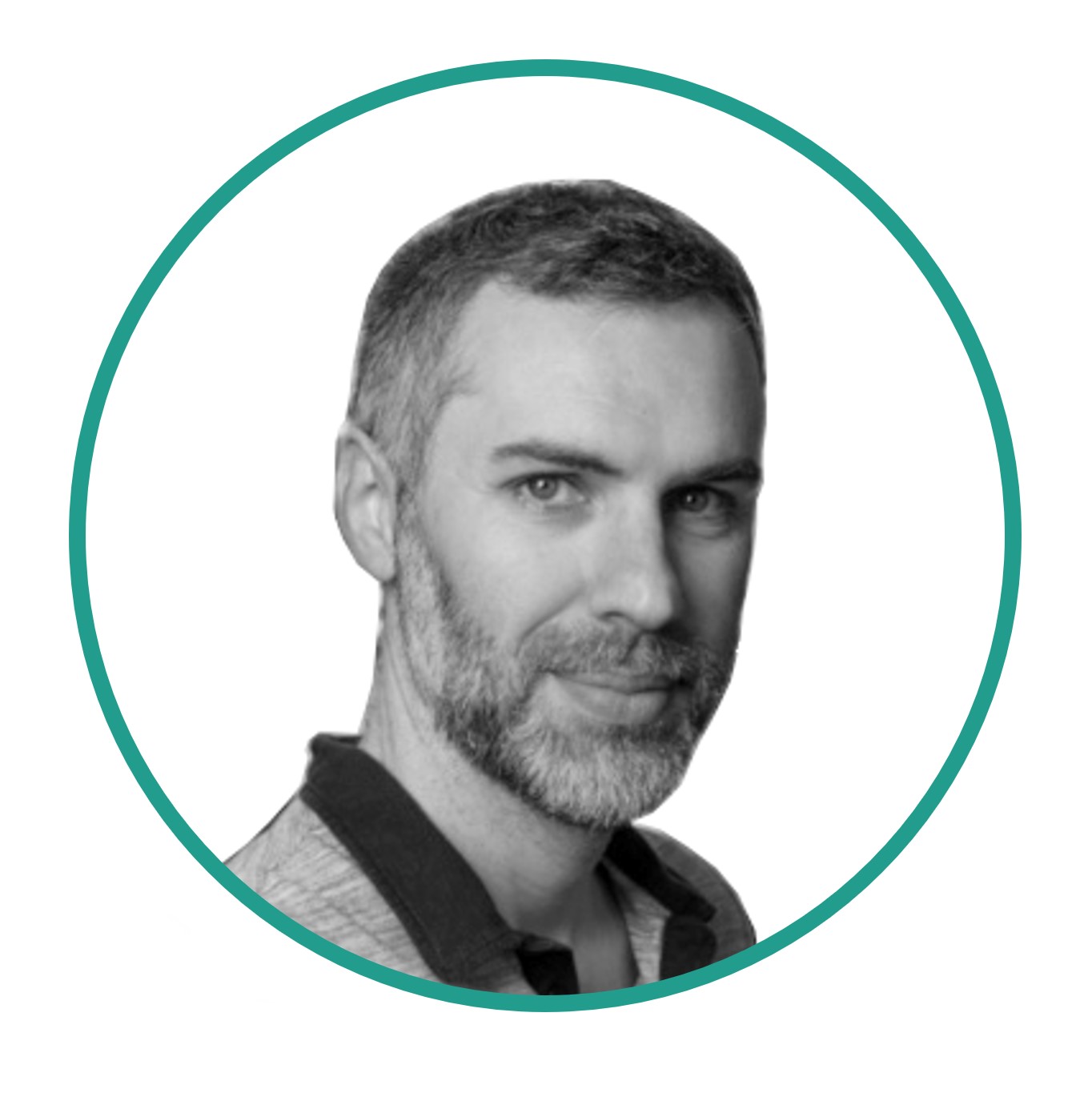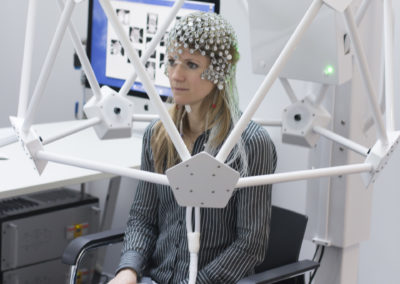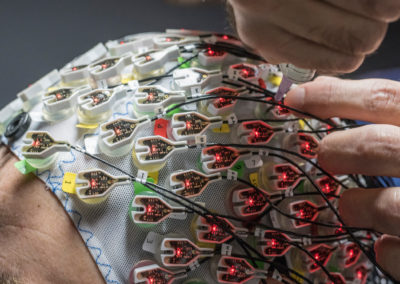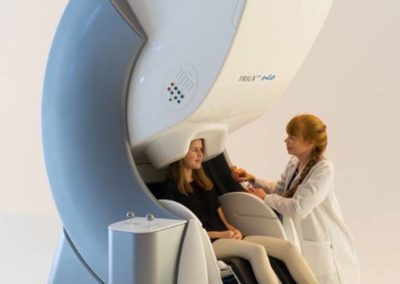
GUEST EXPERT
THE MEG CHALLENGE
EXPAND CAMPUS BIOTECH FROM THE INSIDE

Gwénaël Birot, manager of the MEEG-BCI facility of the Human Neuroscience Platform at Campus Biotech, shared with us his thoughts on the various challenges awaiting the arrival of the very first MEG in Switzerland.
Logistic challenges
Is the area dedicated to the Human Neuroscience Platform at Campus Biotech expanding in order to accommodate this new MEG platform? Where will the MEG be located?
We feel very fortunate that we still had some free space at Campus Biotech to install the new MEG. A new 113 m2 room just next to the EEG facility in the H4 building will be built and dedicated to the MEG.

MEG systems are very sensitive systems. Do you need to create a specific room in order to prevent interferences and electromagnetic perturbations?
Absolutely. MEG systems measure extremely low magnetic fields produced inside the brain. Therefore, the measurement is highly sensitive to external noise such as power lines and electronic devices. Even the trains that pass nearby can create interferences. To prevent this noise from affecting our MEG data, the MEG system will be placed in a magnetic shielded room made of thick metallic walls. In addition, an active system integrated into the shielded room will cancel the remaining magnetic noise in real-time.
Manpower challenges
You are already managing the EEG facilities, how is this a challenge for you to take care of the MEG as well? Will you hire new people or train the current staff?
Of course, adding the management of the MEG system on top of the EEG is challenging, but also extremely motivating. Setting up a new technique for brain exploration, building a new facility from scratch, and being able to propose a new state-of-the-art system to the Swiss neuroscience community is a challenge I am definitely ready to accept.
Moreover, some synergies exist between MEG and EEG. Experimental design and data analysis are similar. We already have an engineer and a scientist working at the EEG facility and their skills can be translated to MEG. The University of Geneva will hire a professor who will be a MEG specialist. He will be able to guide research, answer advanced scientific questions that involve MEG data and help researchers who are new to MEG data. For the operational part, we will hire a technician. Their main role will be to perform the data acquisition, from preparing the subject for MEG exam to assessing the quality of the acquired data.
What is challenging to find an experienced staff regarding the fact that there are not many MEG in the world?
This is indeed difficult to find experienced MEG staff. However, the experiment design and the acquired data itself is very similar to EEG, so for this part we already have a skilled staff at the EEG facility. This summer, experts from MEGIN (https://megin.fi/) will also train us thouroughly on how to best operate their new generation MEG system. We also have started to collaborate with other MEG facilities in Lyon and Paris in order to gain as much experience as possible from them.
Community challenges
This will be the first MEG in Switzerland and therefore the researchers may not be accustomed to using it on a regular basis. Do you think you will find a need/a community in Switzerland?
This is the first question we asked ourselves when we had the idea of getting a MEG for the first time. We have therefore launched a survey among the Swiss neuroscience community to assess their needs. From the replies that we have received, we are very confident that a lot of researchers will be interested to use the MEG system for their research projects. In particular, our MEG system will be one of the brain imaging systems used by the NCCR evolving language (https://evolvinglanguage.ch/).

Are there misconceptions surrounding the MEG performances?
The MEG is not a magical system that surpasses all other techniques of brain investigation. It has its pros and cons, and I think that researchers are aware of that. MEG is more appropriate for certain type of research. For example, contrary to MRI, MEG has an extremely high temporal resolution (around 1 ms). It means that MEG can detect very rapid brain activity that MRI is insensitive to. The drawback is a lower spatial resolution, meaning that we can better localize the origin of the brain activity with MRI. Still, the spatial resolution of the MEG remains better than that of EEG. In the end, researchers always have to determine which type of data is best suited for the question they want to answer.
As a researcher, if I have never used a MEG, is it complicated? If yes, how so and will the HNP provide help?
This is exactly why we are here! We have a full staff dedicated to the MEG system. We will provide training, as well as technical and scientific support to the MEG users. A MEG operator will be permanently in the MEG room the run the acquisition and help in case of a problem. Therefore, even people who are not familiar with MEG will be able to run their MEG study smoothly, from experiment design to data analysis.
MEG ON CAMPUS IN 2022
The Human Neuroscience Platform (HNP) at Campus Biotech will acquire and install a new MEG platform in summer 2022. The new MEGIN TRIUX™ neo will integrate the already existing MEEG-BCI MRI facility.
This ambitious project is the result of an exciting collaboration between the NCCR Evolving Language, the Geneva University Hospitals (HUG), the University of Geneva (UNIGE), the Ecole Polytechnique Fédérale de Lausanne (EPFL) and the Fondation Campus Biotech Geneva (FCBG).





